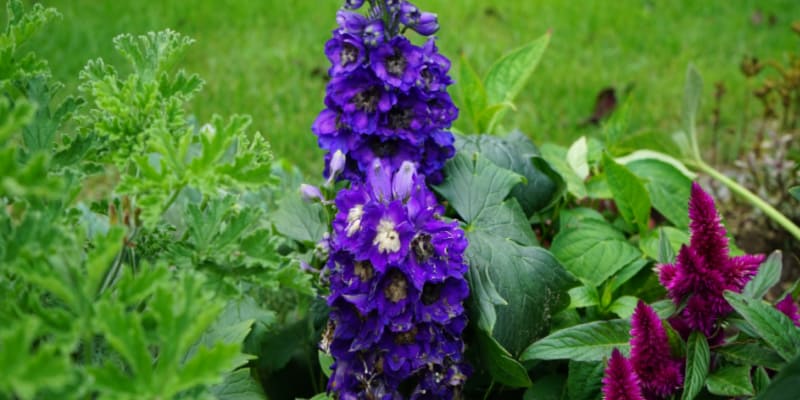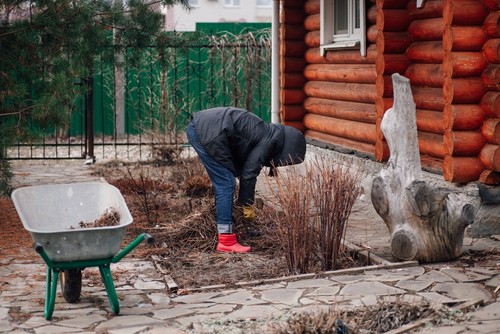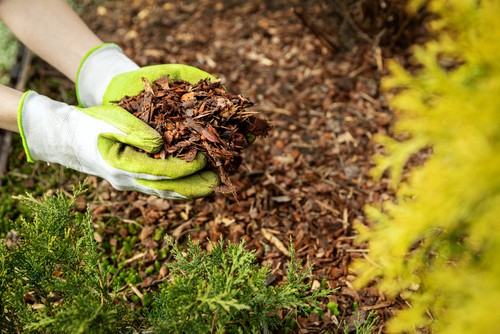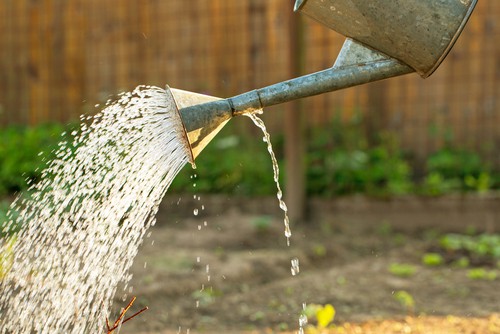
How to keep delphiniums over winter
Our site is reader supported, this means we may earn a small commission from Amazon and other affiliates when you buy through links on our site.
You need to start in late autumn to prepare to keep your delphiniums over winter. Your preparation tasks include cleaning your garden, watering the plants and adding mulch. I will admit, for most people, you could probably do nothing but cut the dead stalks back to an inch above the ground and they will survive. However, you might as well give them the best chances and keeping delphiniums over winter is also about preventing pests and diseases which is why I start with cleaning my garden.
Clean the garden and cut the stems back
Clean up in and around the area your delphiniums take pride of place. Pull up the last remaining weeds and remove any dead or diseased delphinium stalks.
There’s mixed advice about whether to cut the rest of the stalks down to the ground but I’ll tell you what I personally do. If you leave them as is, and plan to clean up in the spring, that provides shelter and warmth for the new shoots after the winter. However, it also provides a warm nesting space for any pests and aphids during the winter.
Many species of aphid eggs are extremely cold hardy and won’t die during the winter. Cleaning up makes it more difficult for them to return in the spring before you get into the garden for the after-winter clean up. Personally, I have always waited until the stalks and leaves have all turned brown, and cut them back to about an inch above ground level. I give the area a good tidy leaving nothing but bare soil and apply a good layer of mulch to help retain moisture. This has always worked for me.
I have also written a guide on when and how to prune delphiniums here.
Add mulch
To maintain the moisture that you’re adding by watering the plant (more on this below), make sure to add mulch on top of the soil. This stops moisture from evaporating from the top of the soil. It also adds a layer of warmth around the delphinium roots to help protect them from hard frosts over winter.
Using organic mulch means that there’s already something to break down and provide nutrients to the soil in the spring. Straw is a good choice, as are chopped-up leaves or leaf mulch or wood/bark chips. Even if a layer of snow falls on the mulch, it still provides a warm blanket for the soil and the plant roots. If also stops the soil from shifting due to the many changes of temperature above and below zero degrees C or heavy rain during the winter.
Water your plants
Don’t be fooled if your delphinium appears to be dormant in the late autumn but the ground hasn’t frozen yet. Even if all the blooms have died and you’ve chopped back the stems as I do, as long as the ground remains warm, the plant’s roots need water. If you’re in a rainy spell and receive a good amount of rain, you don’t need to do any extra watering. But in a dry autumn spell which many of us get, remember to give the plant water on a weekly basis to help keep their roots hydrated.
Once the ground starts to freeze, I then stop watering the plants and forget about them until spring.
In the winter, there may be warm and dry spells. If there’s no snow on the ground to melt and provide the moisture needed, water your delphiniums yourself. But check that the temperature is going to remain above 0˚C.
Thats it, your delphiniums should do well the following spring and put on even more of a show.
I also have a guide on how to care for delphiniums here which could be useful if you are new to growing them. I also have a guide on why they sometimes don’t bloom.


